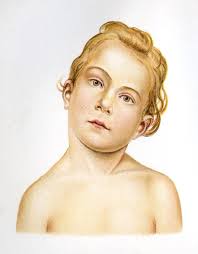
Congenital Torticollis: Understanding and Managing Your Child’s Condition
Introduction
Welcome to our comprehensive guide on congenital torticollis, a condition characterized by the abnormal positioning of the neck muscles in newborns. Congenital torticollis, also known as twisted neck or wryneck, can affect your child’s head and neck alignment. In this article, we will provide you with valuable information about congenital torticollis, including its causes, signs and symptoms, treatment options, and ways to support your child’s well-being.
Understanding Congenital Torticollis
What is Congenital Torticollis?
Congenital torticollis is a condition that occurs at birth or shortly after, resulting in the shortening or tightness of the sternocleidomastoid muscle in the neck. This muscle plays a crucial role in head and neck movement. When it is affected, it can cause the head to tilt to one side while the chin points in the opposite direction. The exact cause of congenital torticollis is still unknown, but it is believed to be related to positioning in the womb or trauma during birth.
Signs and Symptoms
The most common signs and symptoms of congenital torticollis include:
-
Head Tilt: The child’s head tilts to one side, either towards the shoulder or the chest.
-
Limited Neck Mobility: The child may have difficulty rotating or turning their head fully in all directions.
-
Muscle Tightness: The affected sternocleidomastoid muscle may feel firm or tight to the touch.
-
Preference for One Side: The child may prefer to look or sleep in one direction, avoiding movement to the affected side.
Treatment Options
Early intervention and appropriate treatment can help manage and correct congenital torticollis. The following treatment options may be recommended:
-
Stretching Exercises: Gentle stretching exercises prescribed by a healthcare professional can help lengthen and loosen the tight neck muscles. These exercises should be performed regularly to promote improved range of motion.
-
Positioning Techniques: Specific positioning techniques can encourage your child to turn their head and stretch the affected muscles. Your healthcare provider can guide you on appropriate positioning techniques for daily activities, such as feeding and sleeping.
-
Physical Therapy: In some cases, physical therapy sessions may be recommended to facilitate motor development, strengthen muscles, and improve overall posture and movement.
-
Referral to Specialists: If conservative treatments do not yield significant improvement, your healthcare provider may refer you to a specialist, such as a pediatric orthopedic surgeon, for further evaluation and consideration of additional interventions.
Conclusion
Congenital torticollis can be effectively managed with early intervention and appropriate treatment. By understanding the condition, recognizing the signs and symptoms, and following the recommended treatment plan, you can support your child’s development and well-being. Remember, each child’s journey is unique, and with proper care and support, they can overcome the challenges associated with congenital torticollis.